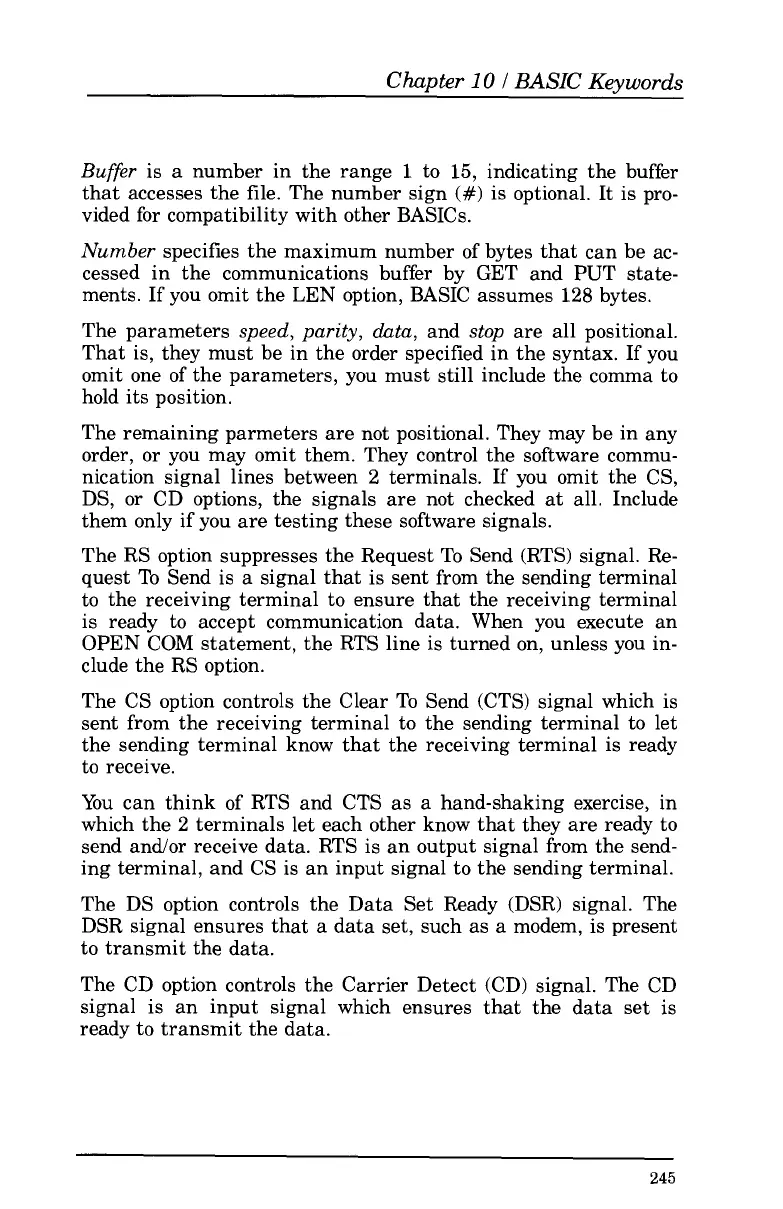Chapter
10
I
BASIC Keywords
Buffer
is
a
number in the range
1
to
15,
indicating the buffer
that accesses the file. The number sign
(#)
is optional. It is pro-
vided
for
compatibility with other BASICs.
Number
specifies the maximum number
of
bytes that can be
ac-
cessed in the communications buffer by GET and PUT state-
ments. If you omit the
LEN
option, BASIC assumes
128
bytes.
The parameters
speed, parity,
data,
and
stop
are all positional.
That is, they must be in the order specified in the syntax. If you
omit one
of
the parameters, you must still include the comma
to
hold its position.
The remaining parmeters are not positional. They may be in any
order,
or
you may omit them. They control the software commu-
nication signal lines between
2
terminals. If you omit the CS,
DS, or CD options, the signals are not checked at all. Include
them only if you are testing these software signals.
The RS option suppresses the Request To Send (RTS) signal. Re-
quest To Send is
a
signal that is sent from the sending terminal
to the receiving terminal to ensure that the receiving terminal
is ready
to
accept communication data. When you execute an
OPEN COM statement, the RTS line is turned on, unless you in-
clude the RS option.
The CS option controls the Clear To Send (CTS) signal which is
sent from the receiving terminal
to
the sending terminal to let
the sending terminal know that the receiving terminal is ready
to
receive.
You can think
of
RTS and CTS as a hand-shaking exercise, in
which the
2
terminals let each other know that they are ready to
send and/or receive data. RTS is an output signal from the send-
ing terminal, and
CS
is an input signal to the sending terminal.
The DS option controls the Data Set Ready
(DSR)
signal. The
DSR signal ensures that
a
data set, such
as
a modem, is present
to transmit the data.
The CD option controls the Carrier Detect (CD) signal. The CD
signal is an input signal which ensures that the data set is
ready
to
transmit the data.
245
